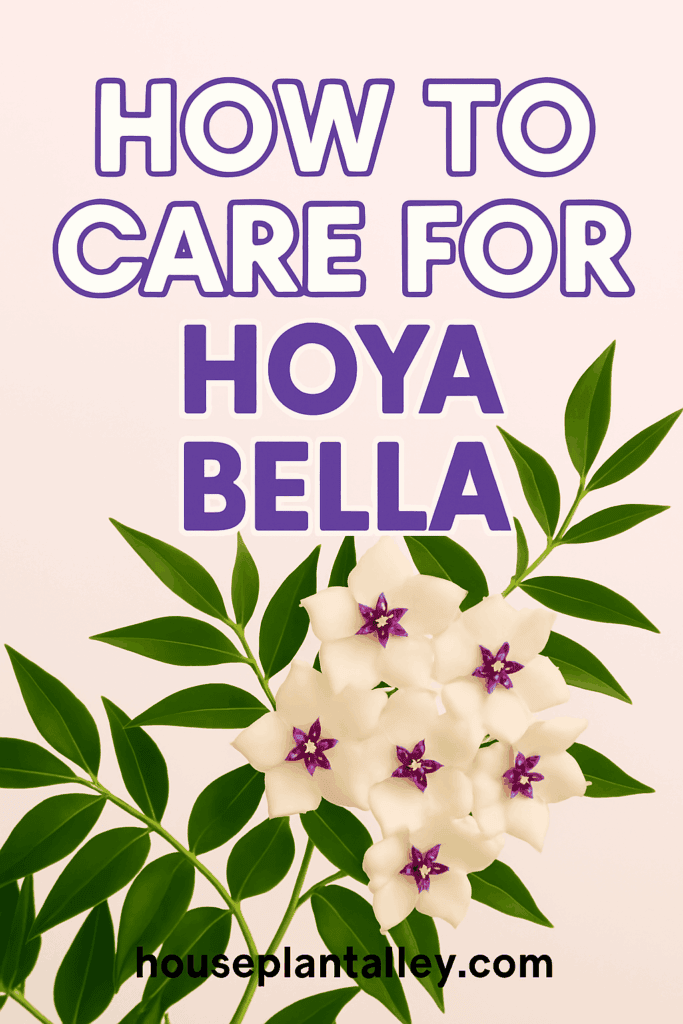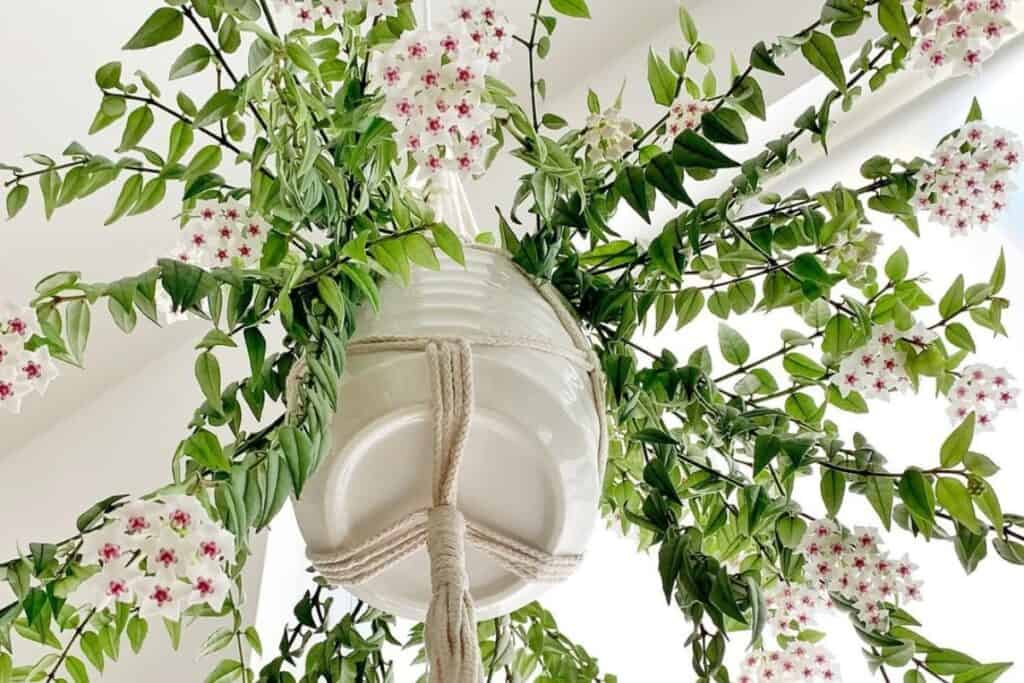Growing Hoya Bella demands patience, rewards consistency, and cultivates beauty. You’ll find this tropical vine adapts well to indoor conditions when you understand its core needs. As botanist Dr. Sarah Chen notes, “The secret lies in mimicking its natural rainforest environment.” With proper light exposure, soil moisture management, and humidity control, your Hoya Bella can transform from a modest houseplant into a stunning display of cascading stems and fragrant star-shaped blooms.

Contents
Understanding Hoya Bella’s Natural Habitat and Growth Patterns
While Hoya Bella originates from the tropical regions of Burma and northern India, you’ll find it thrives in environments that mimic its native habitat. These tropical origins shape its growth habits, including its semi-succulent leaves and trailing vines that can reach up to 18 inches in length.
As an epiphytic plant, it’s naturally adapted to growing on trees in humid conditions. You’ll notice your Hoya Bella grows faster than other hoyas, making it perfect for indoor collections. Its star-shaped flowers emerge in summer, releasing their signature fragrance and showcasing the plant’s distinctive waxy texture.
Essential Light, Water, and Soil Requirements

The proper balance of light, water, and soil creates the foundation for a thriving Hoya Bella. Your plant needs bright, indirect light to flourish – place it near an east or north-facing window where light intensity won’t scorch its leaves.
Water your Hoya Bella when the top 2 inches of soil feel dry. Water frequency typically ranges from every 7-10 days during growing season, adjusting based on humidity and temperature. “Always check soil moisture before watering,” advises botanist Dr. Sarah Chen.
For soil, use a well-draining mix: combine 60% regular potting soil with 20% perlite and 20% orchid bark for ideal aeration and moisture control.
Creating the Perfect Growing Environment
Since your Hoya Bella originates from tropical regions, creating an environment that mimics its natural habitat is essential for success. You’ll want to maintain humidity levels above 50% to keep your plant thriving. Here’s how to achieve this:
- Place a humidity tray filled with pebbles and water beneath the pot
- Group it with other moisture-loving plants
- Use a room humidifier during dry seasons
Keep the temperature range between 75°F and 85°F for ideal growth. Avoid placing your Hoya near drafty windows or air vents, as sudden temperature changes can cause leaf drop. During winter, move plants away from cold windowsills.
Proven Propagation Methods for Success
Growing new Hoya Bella plants through propagation offers multiple reliable methods that you’ll find surprisingly straightforward to master. The most successful approach involves cutting techniques: select a healthy stem with 2-3 nodes, remove lower leaves, and place it in well-draining potting mix.
For layering methods, you’ll want to identify a flexible stem that’s still attached to the parent plant. Pin this stem down into a separate pot filled with moist soil. Once roots develop after 4-6 weeks, cut the connection to the mother plant.
Both methods work best during spring and summer when growth is most active.
Troubleshooting Common Growing Challenges
While caring for Hoya Bella plants brings many rewards, you’ll likely encounter several common challenges that require prompt attention and specific solutions. Watch for these key issues:
Leaf Problems:
- Wrinkled leaves indicate underwatering – increase watering frequency
- Yellow leaves often mean overwatering – let soil dry between waterings
- Brown spots suggest sunburn – move plant away from direct light
Pest Control:
- Check undersides of leaves weekly for spider mites
- Treat scale insects immediately with insecticidal soap
- Combat aphids by spraying leaves with neem oil solution
- Maintain 50%+ humidity to prevent pest infestations
